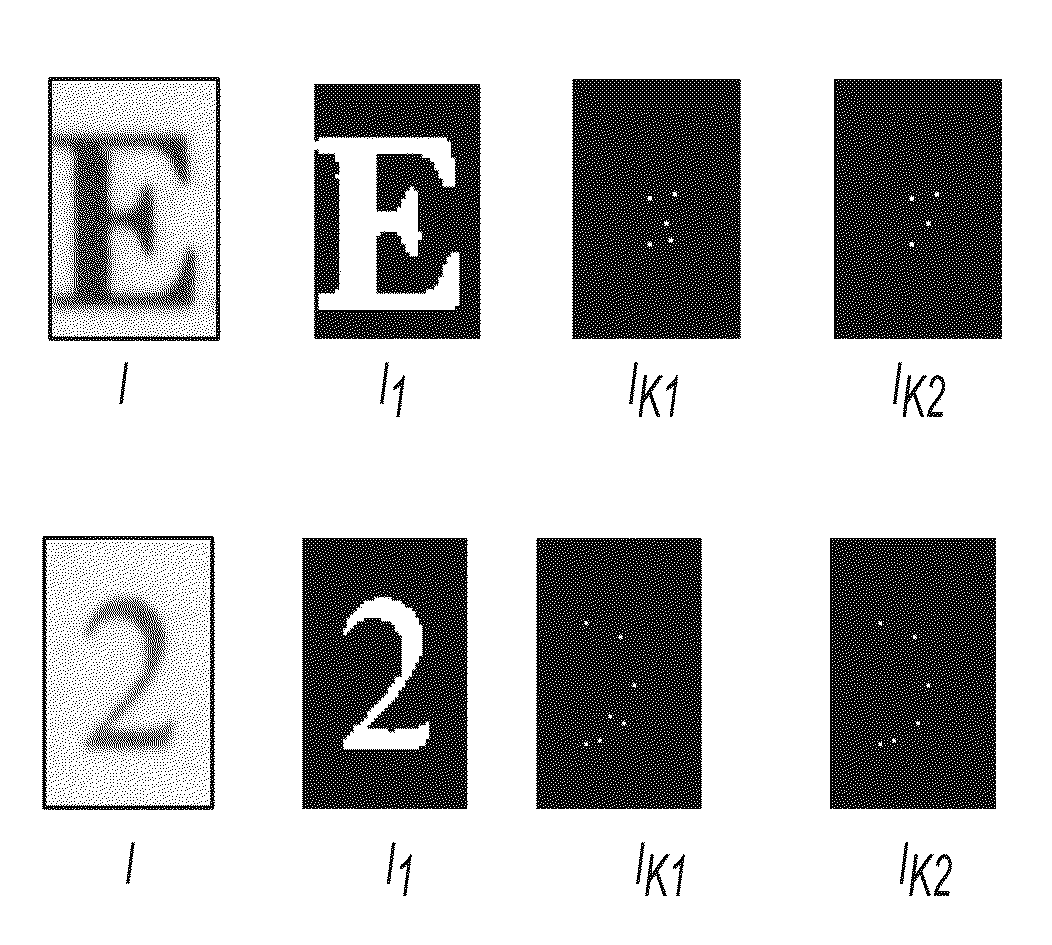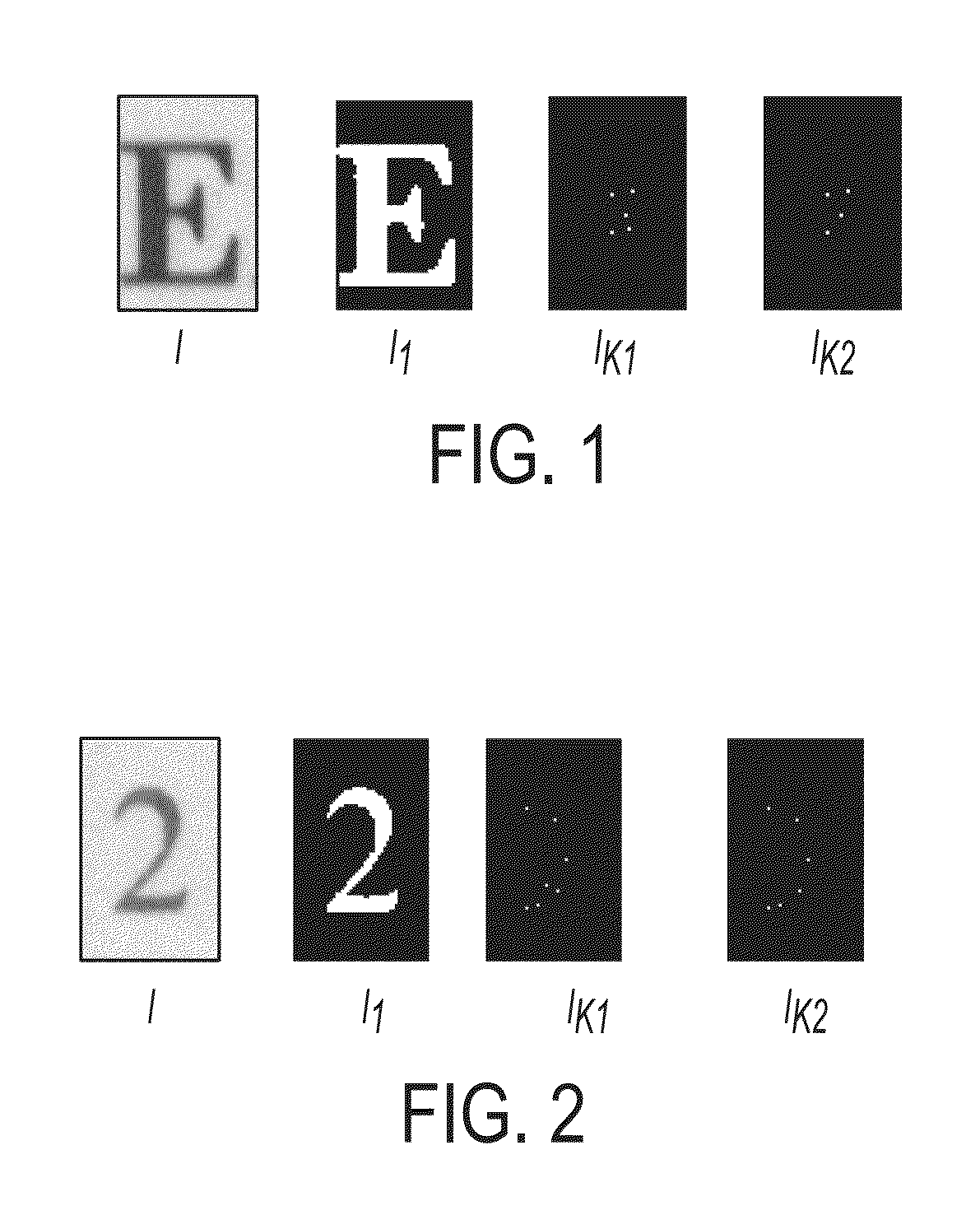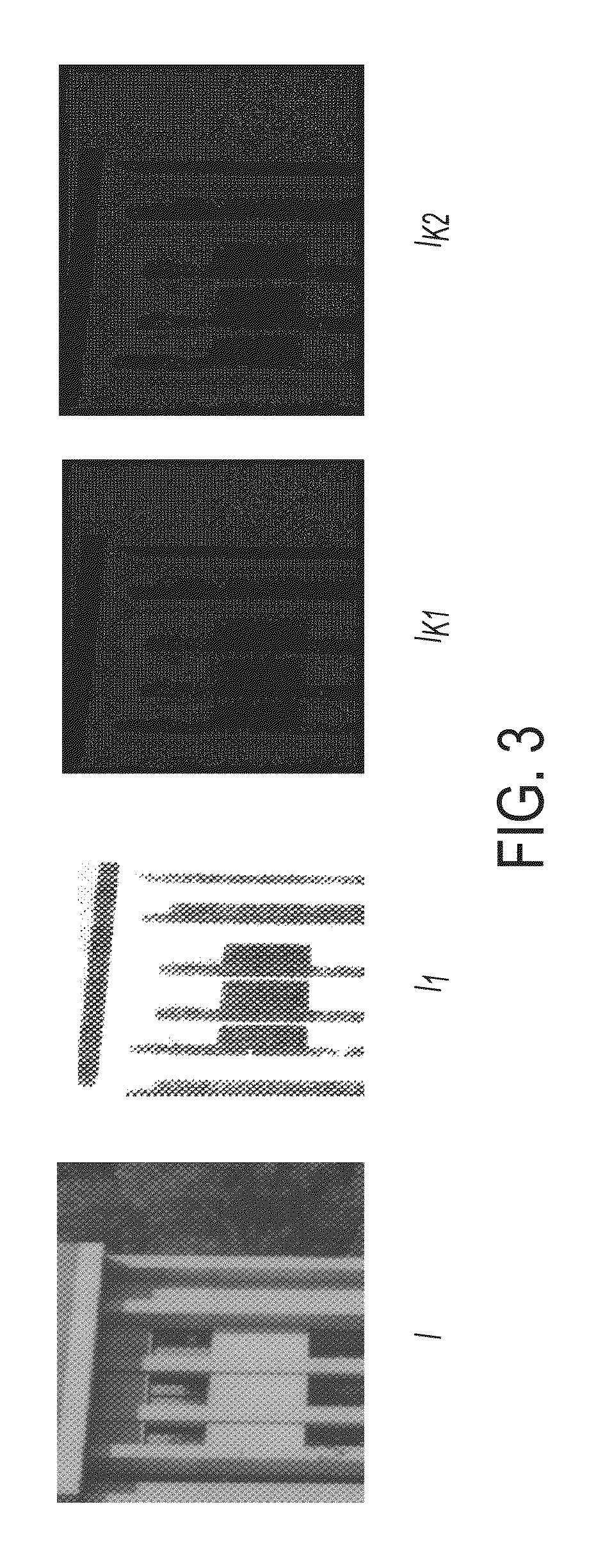Method and apparatus for segmenting image into halftone and non-halftone regions
a technology of image segmentation and segmentation method, applied in the field of segmentation method of image segmentation into halftone and non-halftone regions, can solve the problems of higher time and computation cost, higher misclassification, and use of certain methods (e.g
- Summary
- Abstract
- Description
- Claims
- Application Information
AI Technical Summary
Benefits of technology
Problems solved by technology
Method used
Image
Examples
Embodiment Construction
[0022]The disclosure describes various embodiments of method and apparatus for segmenting halftone and non-halftone region using relative feature points derived from a grayscale image by using a scale invariant feature transform (SIFT) algorithm. A scanned image converted into a binary image using a thresholding algorithm and a connected component analysis. Relative SIFT keypoints are used to classify the image into halftone and non-halftone regions. The process is label based which enables the parallel processing of the SIFT features for separate areas derived from the connected component analysis.
[0023]Generally, SIFT keypoints are invariant to image translation, scaling, and rotation and the SIFT algorithm is useful for matching and recognition of images. The various embodiments described herein show how David Lowe's SIFT keypoint detector helps in segmenting the halftone and non-halftone regions in an image. Initially, an input image is thresholded to form a binary image. Connec...
PUM
 Login to View More
Login to View More Abstract
Description
Claims
Application Information
 Login to View More
Login to View More - R&D
- Intellectual Property
- Life Sciences
- Materials
- Tech Scout
- Unparalleled Data Quality
- Higher Quality Content
- 60% Fewer Hallucinations
Browse by: Latest US Patents, China's latest patents, Technical Efficacy Thesaurus, Application Domain, Technology Topic, Popular Technical Reports.
© 2025 PatSnap. All rights reserved.Legal|Privacy policy|Modern Slavery Act Transparency Statement|Sitemap|About US| Contact US: help@patsnap.com



